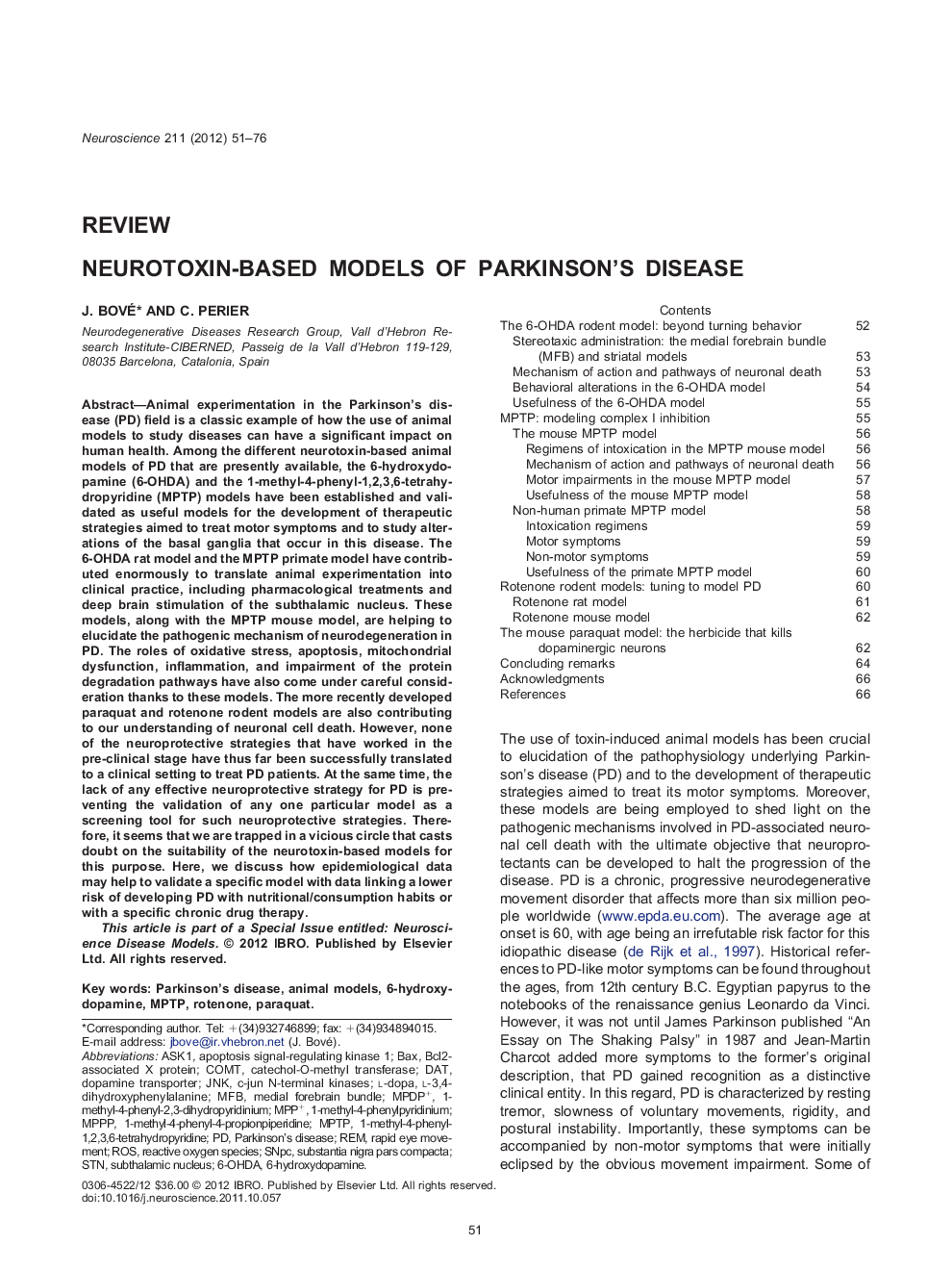| کد مقاله | کد نشریه | سال انتشار | مقاله انگلیسی | نسخه تمام متن |
|---|---|---|---|---|
| 4338416 | 1614865 | 2012 | 26 صفحه PDF | دانلود رایگان |

Animal experimentation in the Parkinson's disease (PD) field is a classic example of how the use of animal models to study diseases can have a significant impact on human health. Among the different neurotoxin-based animal models of PD that are presently available, the 6-hydroxydopamine (6-OHDA) and the 1-methyl-4-phenyl-1,2,3,6-tetrahydropyridine (MPTP) models have been established and validated as useful models for the development of therapeutic strategies aimed to treat motor symptoms and to study alterations of the basal ganglia that occur in this disease. The 6-OHDA rat model and the MPTP primate model have contributed enormously to translate animal experimentation into clinical practice, including pharmacological treatments and deep brain stimulation of the subthalamic nucleus. These models, along with the MPTP mouse model, are helping to elucidate the pathogenic mechanism of neurodegeneration in PD. The roles of oxidative stress, apoptosis, mitochondrial dysfunction, inflammation, and impairment of the protein degradation pathways have also come under careful consideration thanks to these models. The more recently developed paraquat and rotenone rodent models are also contributing to our understanding of neuronal cell death. However, none of the neuroprotective strategies that have worked in the pre-clinical stage have thus far been successfully translated to a clinical setting to treat PD patients. At the same time, the lack of any effective neuroprotective strategy for PD is preventing the validation of any one particular model as a screening tool for such neuroprotective strategies. Therefore, it seems that we are trapped in a vicious circle that casts doubt on the suitability of the neurotoxin-based models for this purpose. Here, we discuss how epidemiological data may help to validate a specific model with data linking a lower risk of developing PD with nutritional/consumption habits or with a specific chronic drug therapy.This article is part of a Special Issue entitled: Neuroscience Disease Models.
▶6-OHDA and MPTP models are used to develop new therapies for PD motor symptoms. ▶Toxin models are helping to elucidate the mechanisms of cell death involved in PD. ▶Toxin models generate neuroprotective candidates as nicotine to be tested in trials.
Journal: Neuroscience - Volume 211, 1 June 2012, Pages 51–76